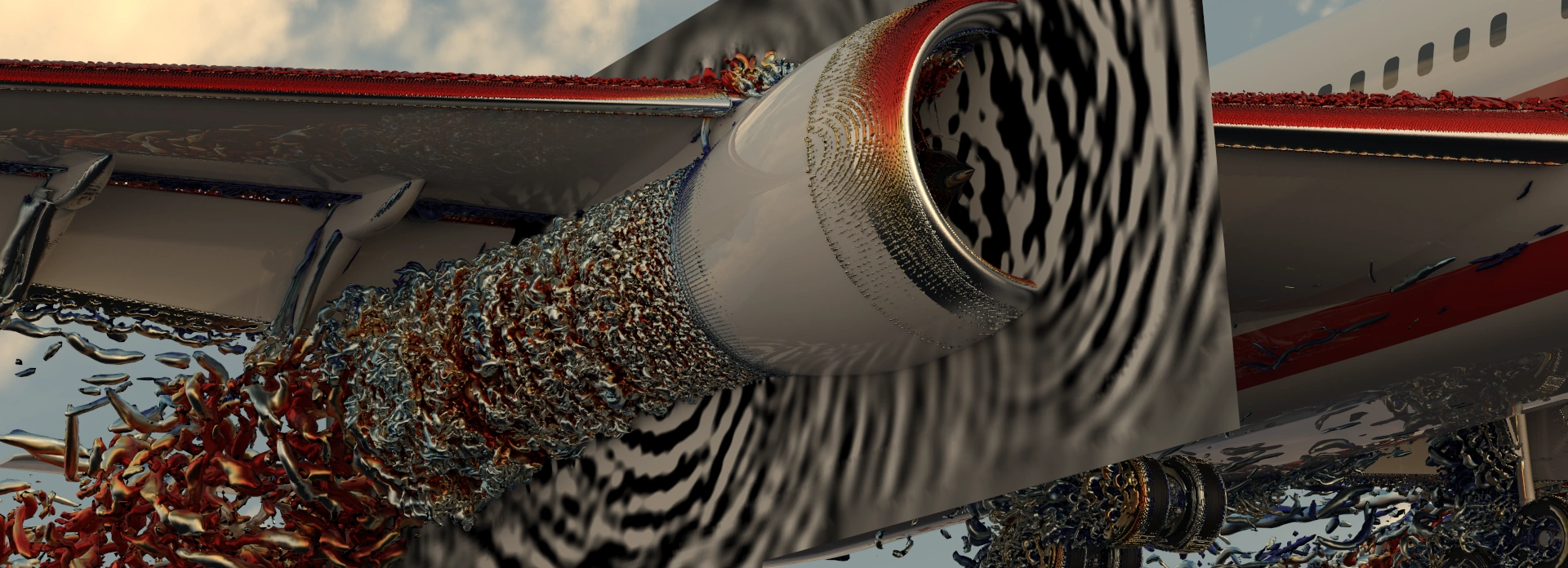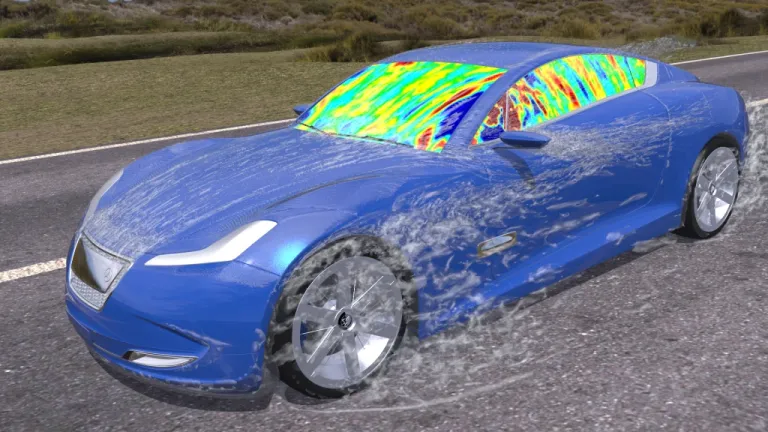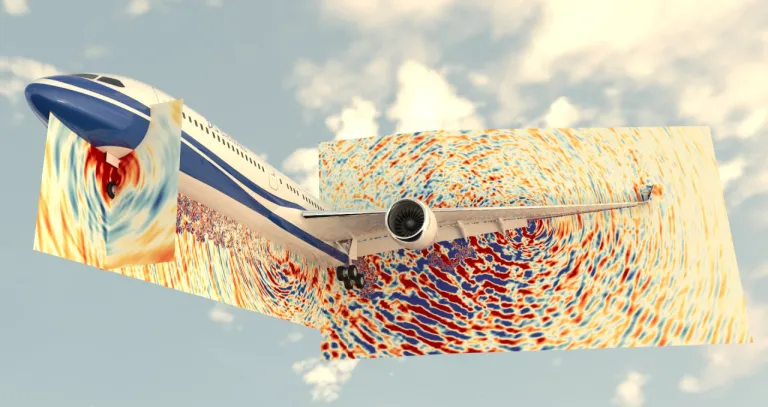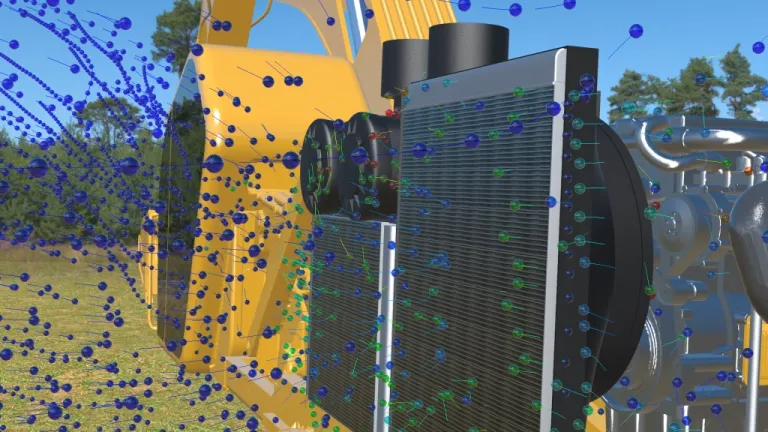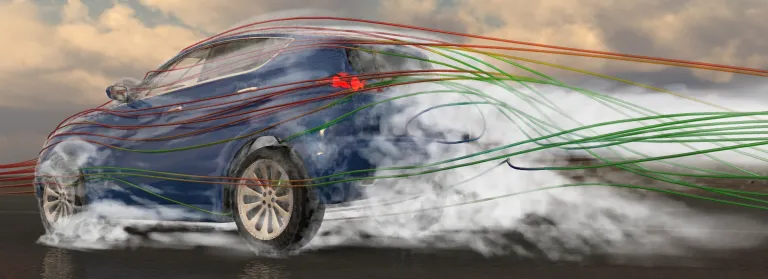Aeroacoustics Simulation
Compuational Fluid Dynamics Simulation for Aeroacoustics and Noise
Why Aeroacoustics Simulation?
The roar of aircraft, the buffeting wind noise inside a car, the whir of a fan or the hum of a wind turbine – all of these often-annoying noises are caused by the flow of air around structures. Customer demands and legal regulations require careful control and to minimization of the noise.
Industry Challenges Solved by Aeroacoustics Simulation
In the automotive industry, noise is one of the main complaints from drivers and passengers. Considerable effort is put into minimizing noise from all sources, including the greenhouse, underbody and heating, ventilation and air conditioning (HVAC). In aerospace, community noise limits imposed around airports mean that even a reduction of a few decibels can offer a key competitive edge. Similarly, the noise produced by wind turbines is key to community acceptance and planning permission.
Fluid simulation can model the flow of air around structures and the noise produced. Users can examine the full spectrum of the noise or listen to a replication of the real-world sound, and identify the contribution of different parts of the structure. Potential noise problems can be identified and resolved early in design, saving time and money. A wide range of different real-world scenarios can be considered, including ones that could not be easily tested in the wind tunnel or on a test track.
Aeroacoustics Simulation Solutions
The SIMULIA brand of Dassault Systèmes offers a portfolio of powerful fluid simulation tools that can tackle a wide range of aeroacoustics problems and challenges including:
- Car greenhouse and underbody wind noise
- Window and sunroof buffeting
- Community noise and pass-by noise
- Wind turbine noise
- Cooling fan and HVAC noise
- Propulsion noise
Aeroacoustics Simulation Applications
- Greenhouse and Underbody Wind Noise
- Community and Pass-by Noise
- Fan and HVAC noise
Greenhouse and Underbody Wind Noise
Reducing interior noise levels improves passenger comfort and is a key concern for acoustic engineers. Simulation can model the flow of air around and under the vehicle or aircraft. It can also consider taking conditions and surroundings, and identify sources of noise that can be modified or mitigated.
Community and Pass-by Noise
Noise from aircraft, road vehicles, trains, machinery and wind turbines is one the main sources of conflict with local communities. Tackling noise makes it more likely that a project is approved, and gives users a competitive edge where legal restrictions on noise levels exist.
Fan and HVAC Noise
The persistent noise of cooling and ventilation fans is a major annoyance in buildings and vehicles. Aeroacoustic helps to redesign fans to reduce noise. Aeroacoustics simulation can also model and optimize noise emissions by HVAC system as a whole to reduce the noise perceived by residents.
Start Your Journey
Explore the technological advancements, innovative methodologies, and evolving industry demands that are reshaping the world of Aeroacoustics. Stay a step ahead with SIMULIA. Discover now.
FAQs About Aeroacoustics Software
Also Discover
Learn What SIMULIA Can Do for You
Speak with a SIMULIA expert to learn how our solutions enable seamless collaboration and sustainable innovation at organizations of every size.
Get Started
Courses and classes are available for students, academia, professionals and companies. Find the right SIMULIA training for you.
Get Help
Find information on software & hardware certification, software downloads, user documentation, support contact and services offering
